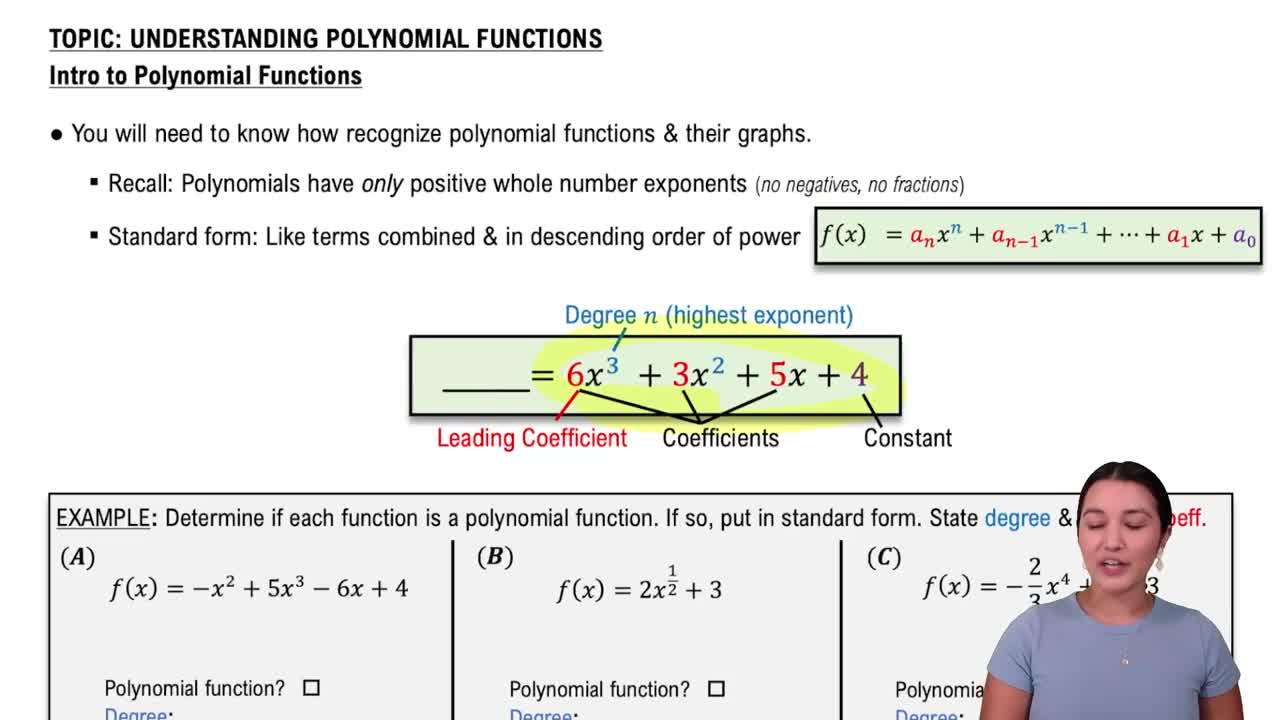Here are the essential concepts you must grasp in order to answer the question correctly.
Function Addition
Function addition involves combining two functions by adding their outputs for each input value. For functions ƒ(x) and g(x), the sum (ƒ+g)(x) is calculated as ƒ(x) + g(x). This operation is fundamental in algebra as it allows for the creation of new functions from existing ones, facilitating further analysis and manipulation.
Recommended video:
Adding & Subtracting Functions Example 1
Domain of a Function
The domain of a function is the set of all possible input values (x-values) for which the function is defined. For polynomial functions like ƒ(x) = 2x² - 3x and g(x) = x² - x + 3, the domain is typically all real numbers, as polynomials do not have restrictions such as division by zero or square roots of negative numbers.
Recommended video:
Domain Restrictions of Composed Functions
Polynomial Functions
Polynomial functions are mathematical expressions that involve variables raised to whole number powers, combined using addition, subtraction, and multiplication. The functions given, ƒ(x) = 2x² - 3x and g(x) = x² - x + 3, are both polynomials of degree 2. Understanding their structure is crucial for performing operations like addition and analyzing their behavior.
Recommended video:
Introduction to Polynomial Functions



